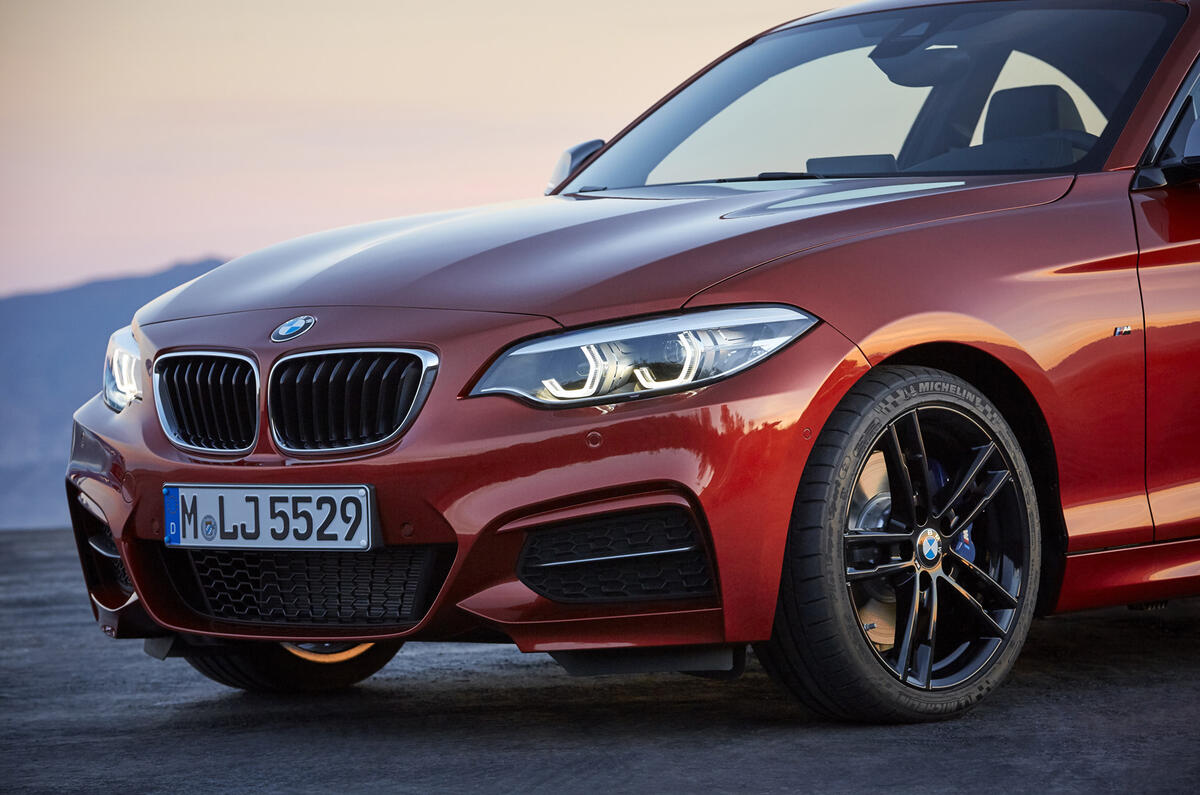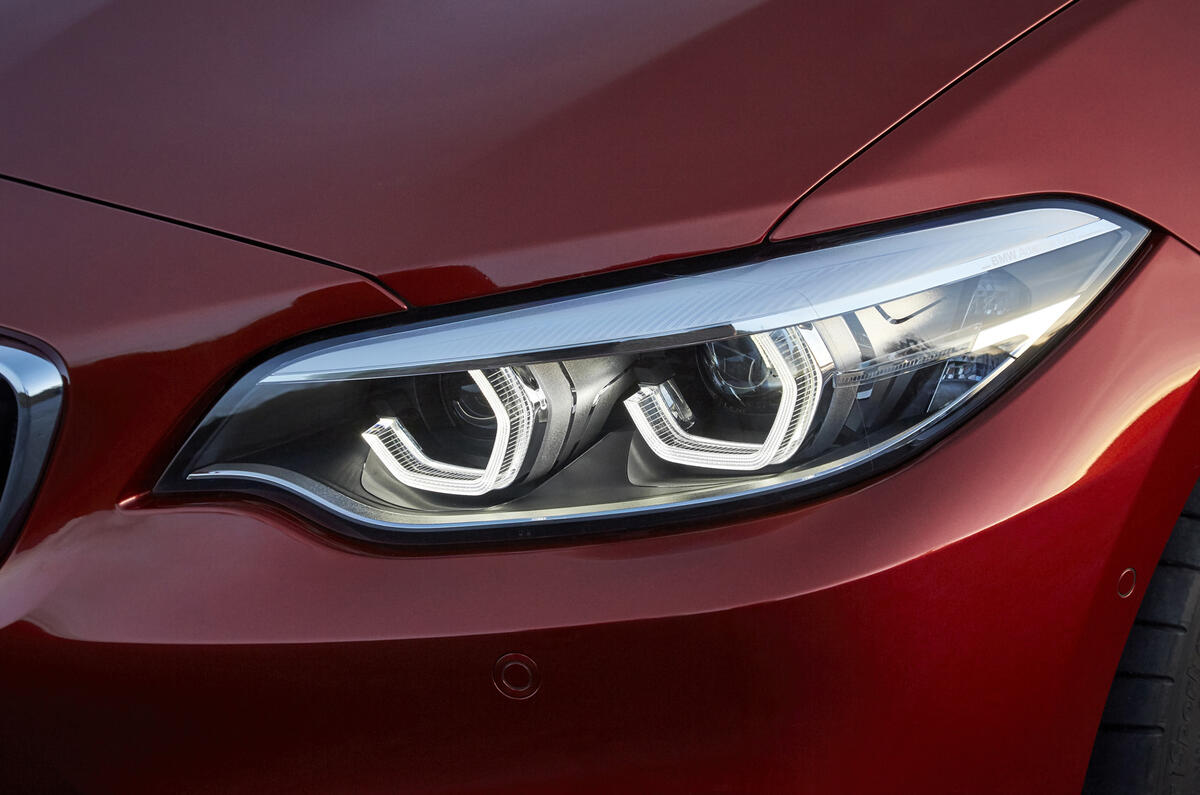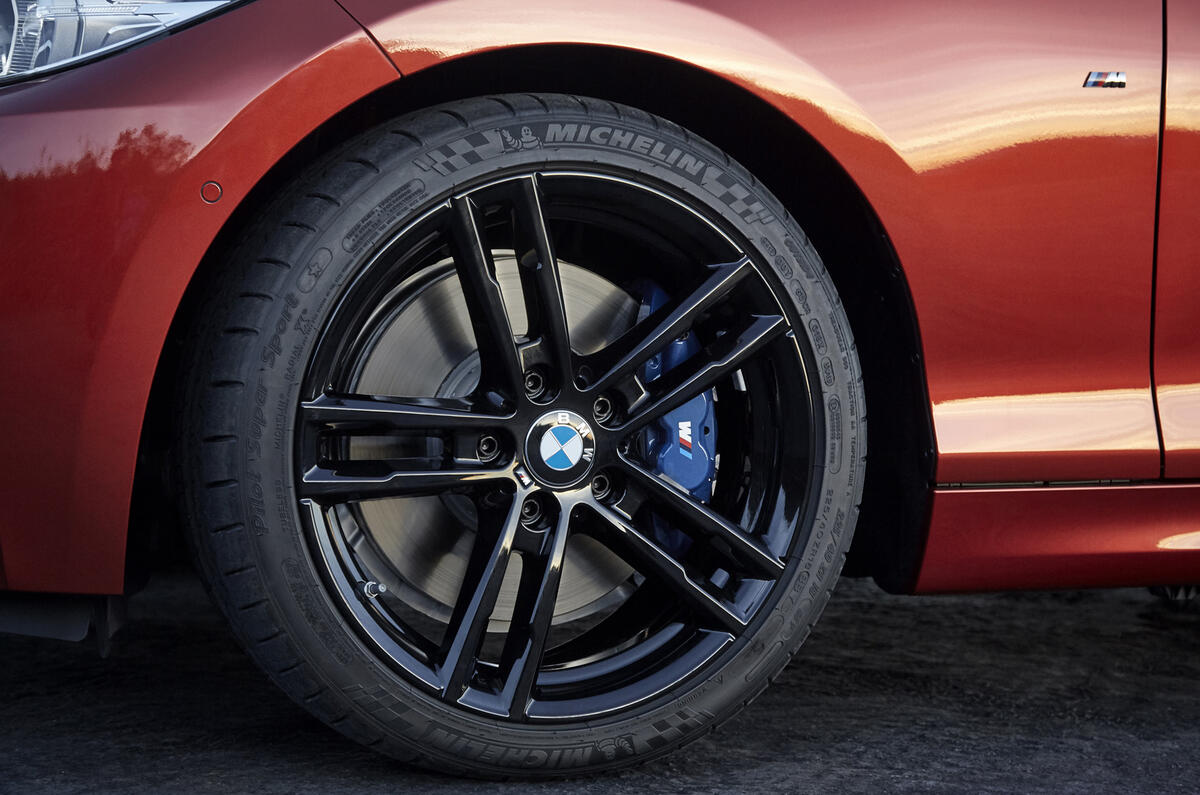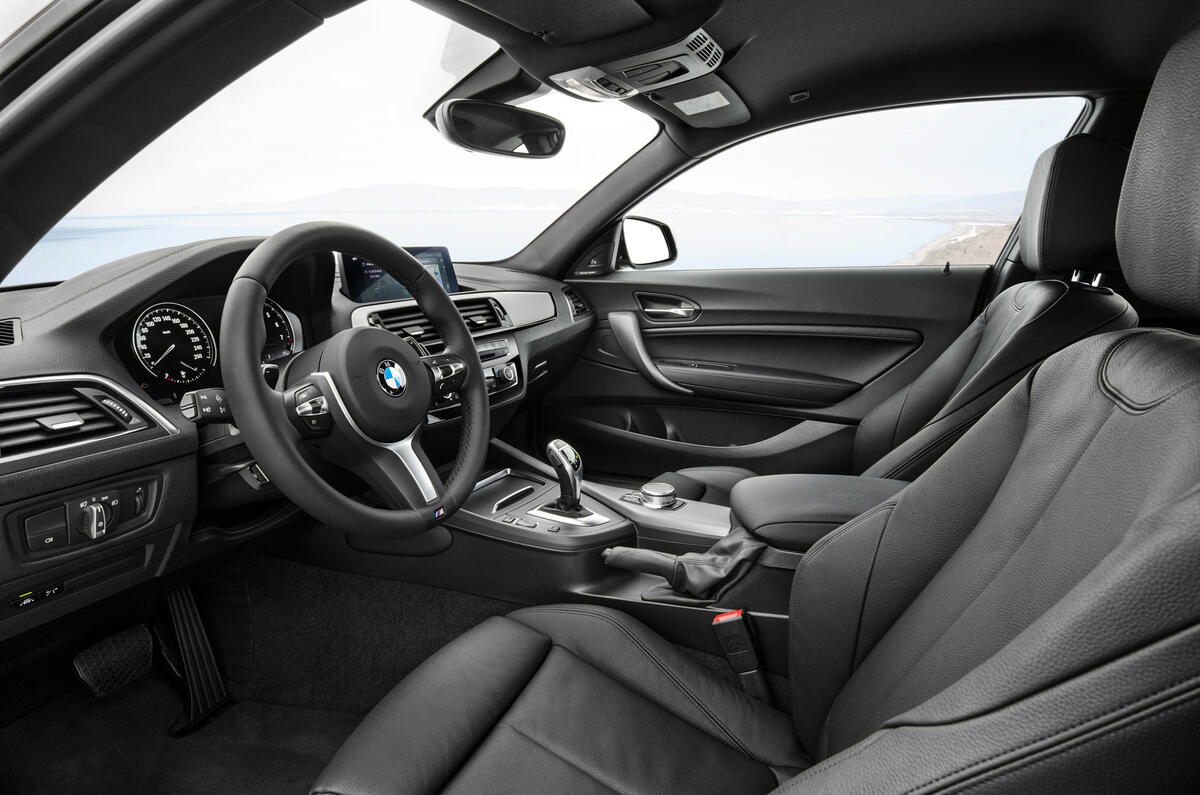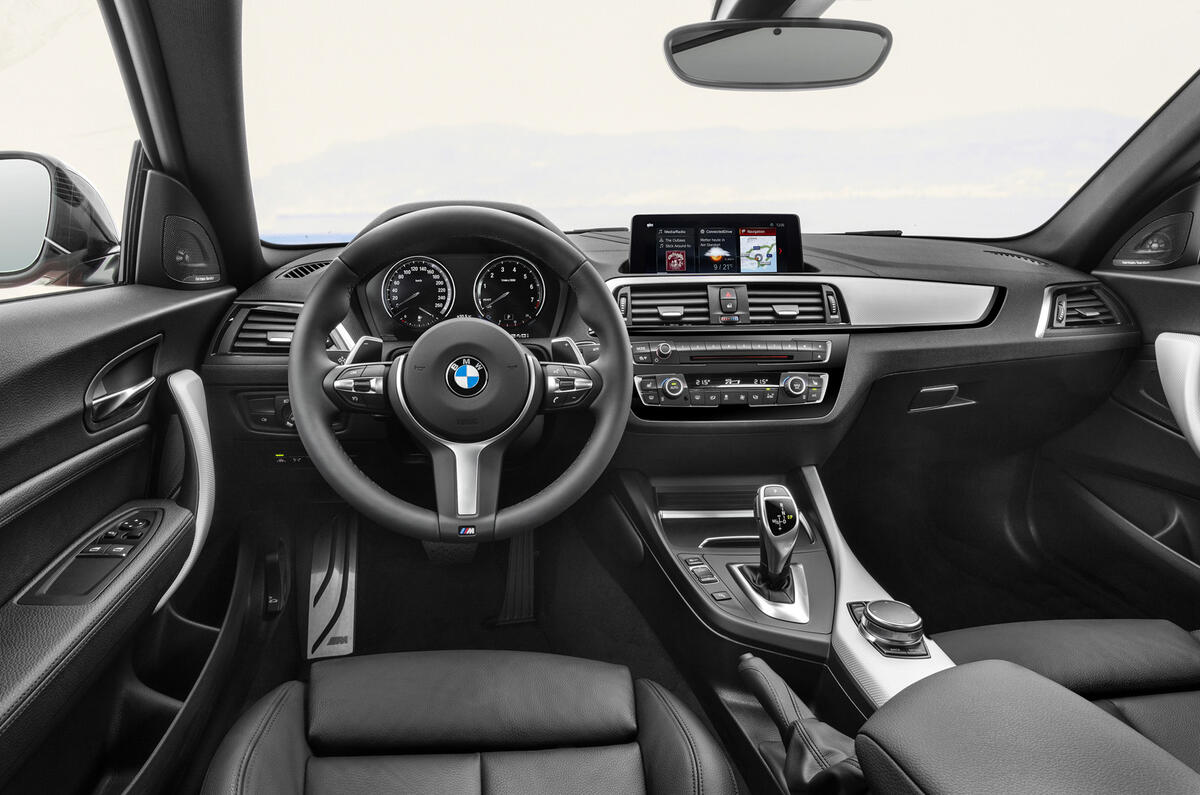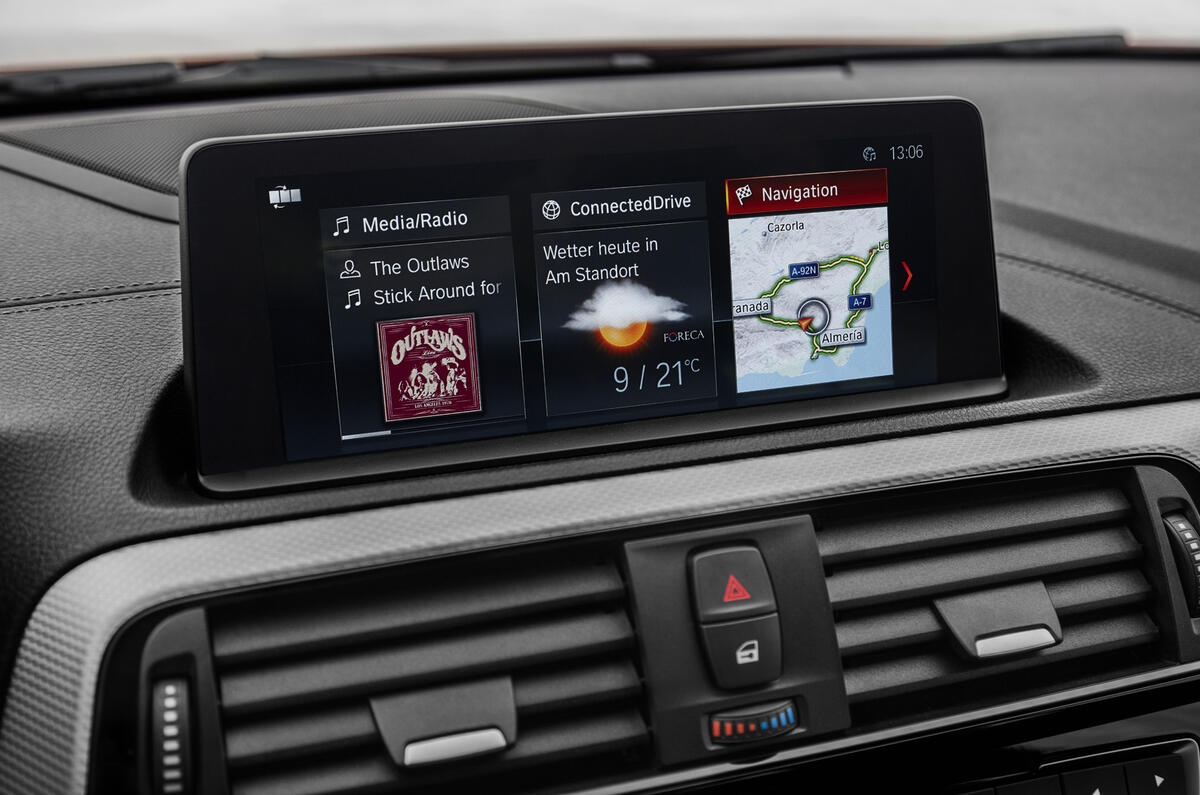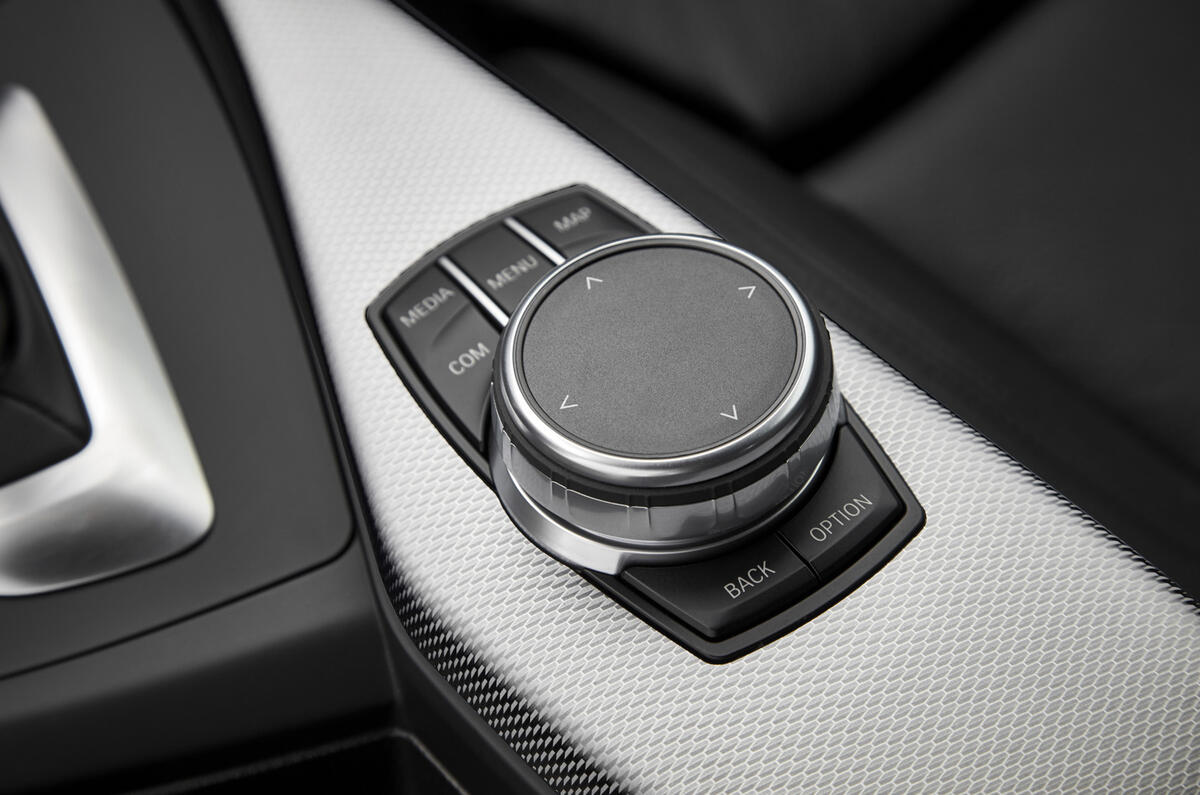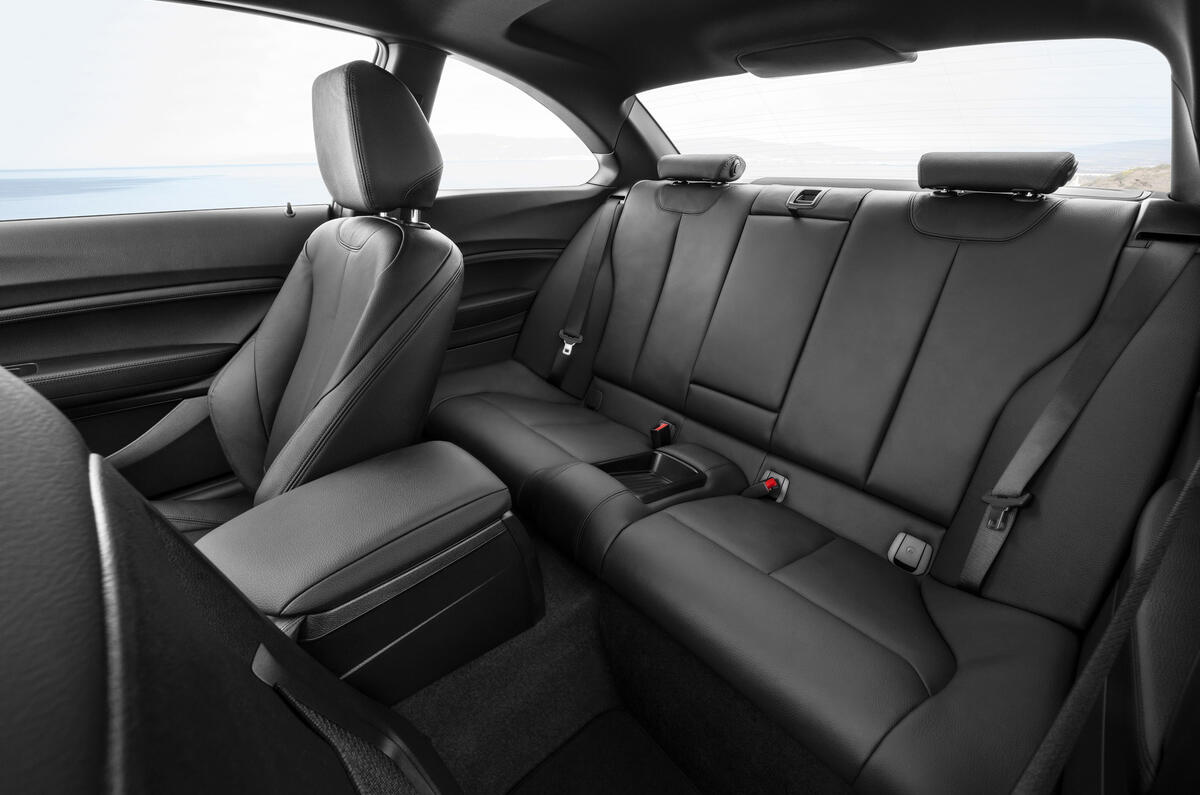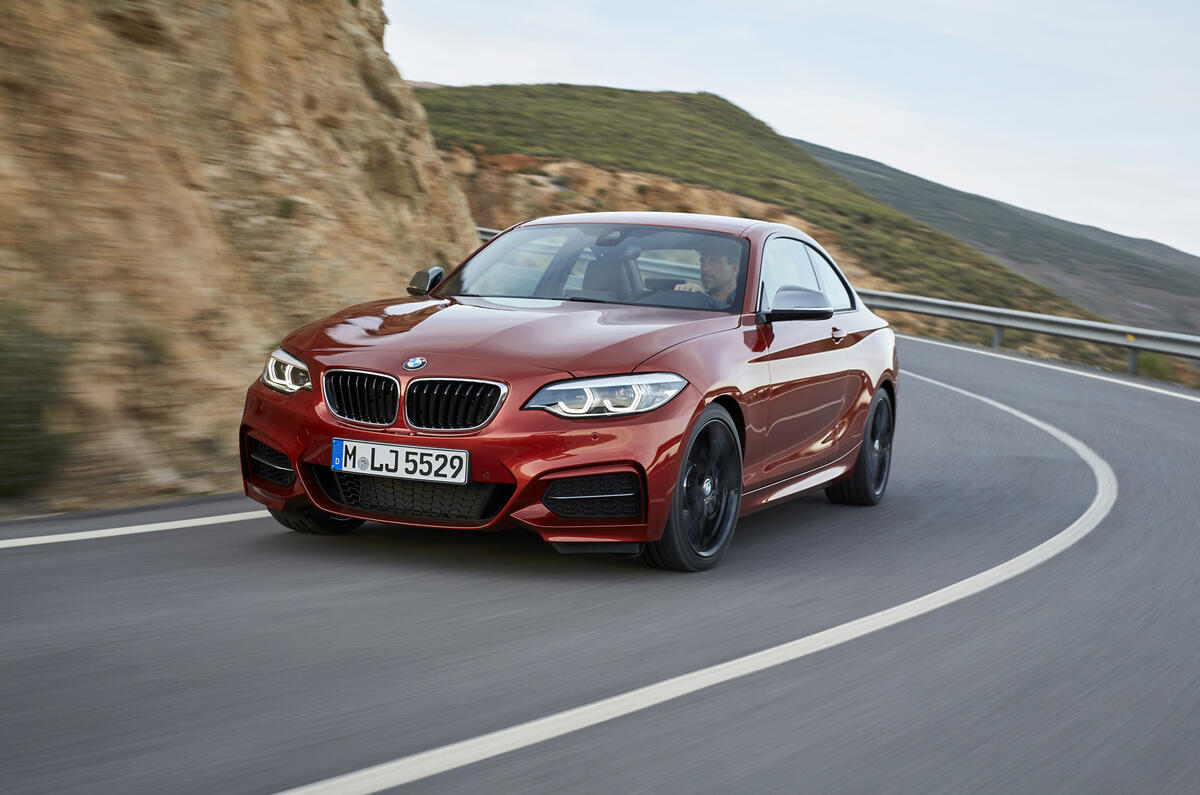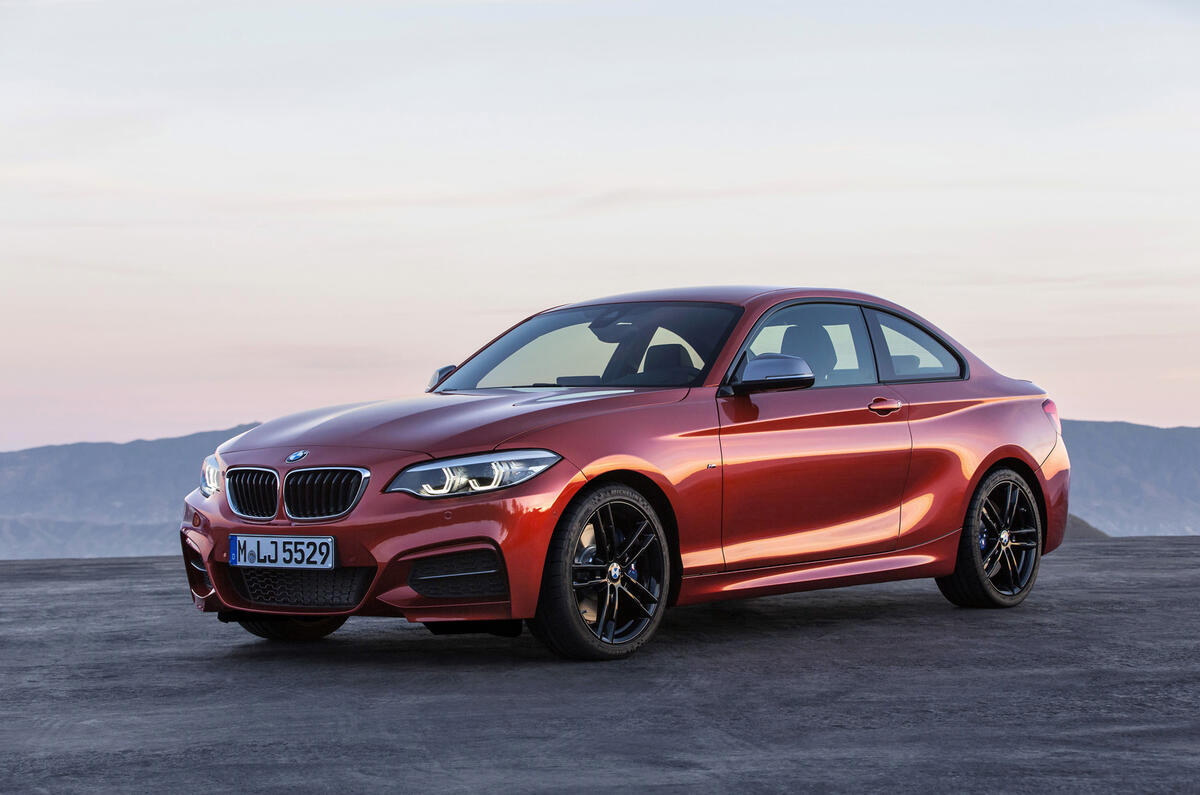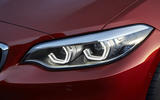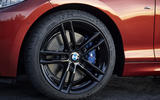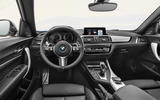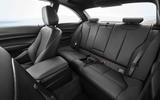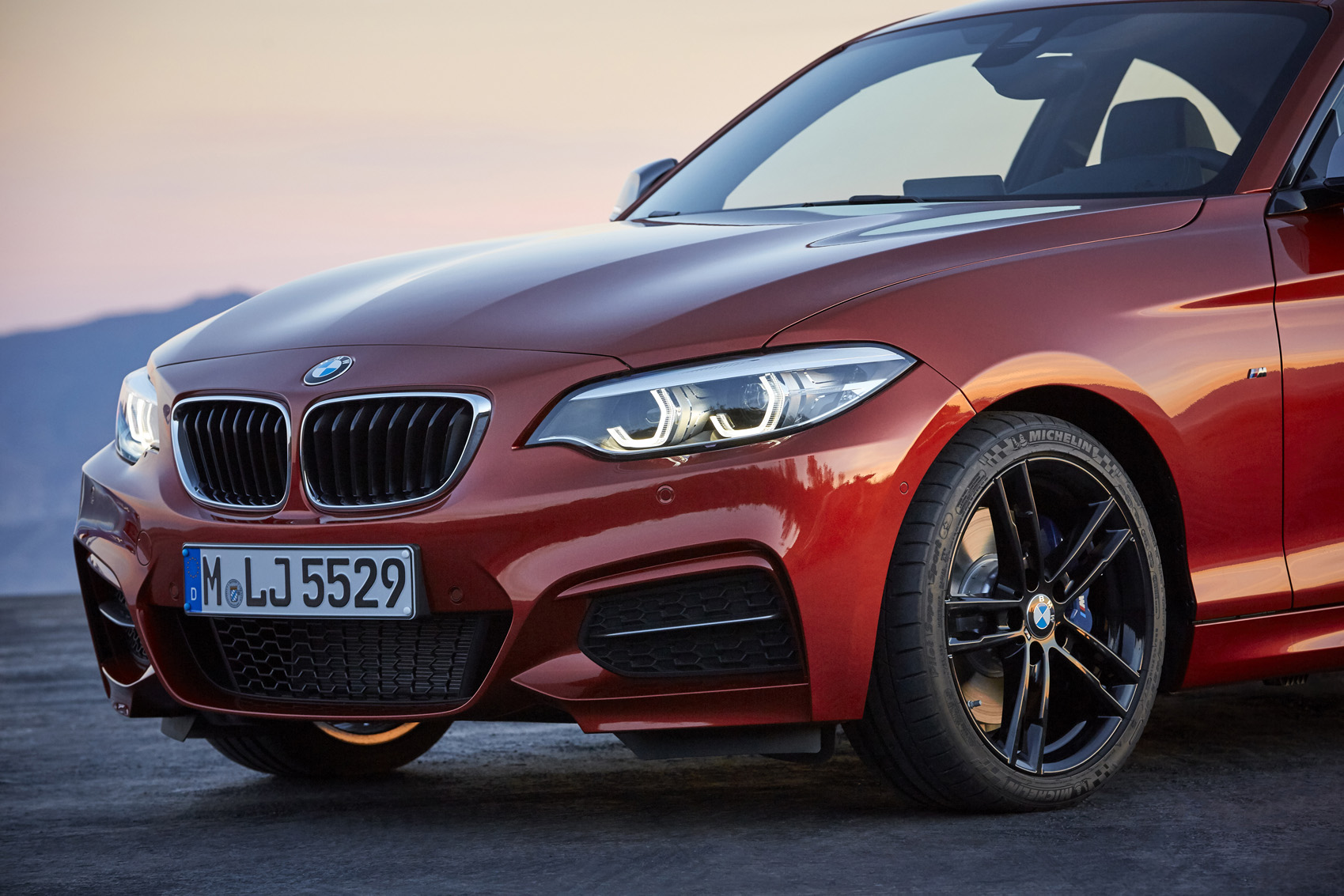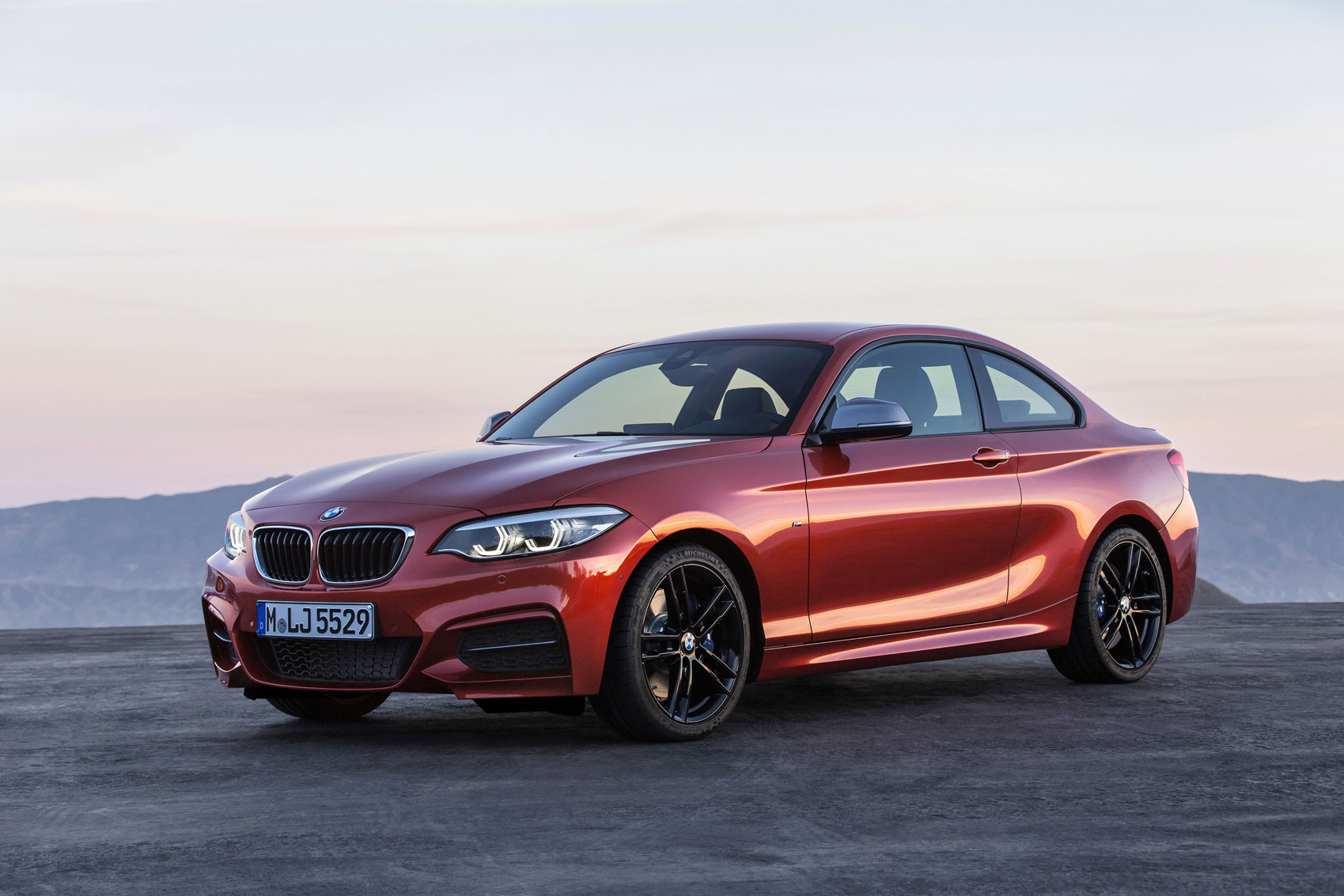In many ways, we’ve seen what’s inside the new BMW 2 Series Coupe before. BMW’s ‘layered’ dash architecture has been carried over from the 1 Series and therefore makes the car feel every inch a downscaled 3 Series. The 2017 facelift also saw the interior given a mid-life refresh with a new instrument cluster, new air vents, touches of chrome and better driver's ergonomic with the headline act an updated version of the iDrive infotainment system complete with a refreshed design, sat nav and a touchscreen display.
Downsizing owners of the latter will, therefore, find themselves right at home, if a little thrown by the uncanny shrink-wrap effect that makes it that bit harder to get totally comfy behind the steering wheel and apparently far-flung pedals.
Nevertheless, compared to the old 1 Series coupé, the car is noticeably roomier inside. Few will appreciate the extra 6mm of headroom, but 21mm more rear legroom is not to be sniffed at, although taller rear passengers might find the coupé roofline too close for comfort.
Getting in and out isn’t overly difficult, but the pitch of the rear backrests can make it something of a stomach muscle workout.
Those backrests will fold down should you have the need, but it’ll take quite a load to exhaust the space available in the 2-series’ handsomely proportioned boot. It has grown by 20 litres to 390 litres – a total volume that makes it marginally bigger than a Volkswagen Golf’s.
The effect of the packaging grows on you the more you think about it. Two usable back seats and that (comparatively) large boot place the new model far higher up the practicality scale than a current Audi TT or a Peugeot RCZ.
And thanks to BMW’s insistence on a driver-focused ambience – with low-set ergonomic precision to match – the 2 Series has the pedigree to rival the implied sportiness of those alternatives.
There are four trim levels to choose from - SE, Sport, M Sport and M Sport Plus. Entry-level SE models get 17in alloys, climate control, heated mirrors and washer bottles, automatic wipers and lights, LED lights all round and reversing parking sensors as standard, alongside BMW's fabulous iDrive infotainment display complete with a 6.5in display.
Upgrade to Sport and you get ambient interior lighting, sport seats and instrument cluster, while M Sport cars get an aggressive bodykit, 18in alloy wheels, sport suspension, and headlight washers. For those wanting to add a little more luxury to their 2 Series can add the M Sport Plus pack, which adds bigger alloys a Harman and Kardon stereo, a rear spoiler and tinted rear windows - the latter two features are only available on the coupé version.
Craving a bit more power? The BMW M240i may very well be the answer - as part of the M Performance bracket of the BMW range, in between the standard cars and the full fat M variants - with its 335bhp 3.0-litre six-cylinder petrol engine. The M240i also gets treated to an aggressive M Sport bodykit, braking system, rear spoiler, individually tuned sports supension and variable steering rack. Other luxuries include leather upholstery and dual-zone climate control.
Topping the range is the M2 - which uses the same engine as the M240i just cranked up a bit to produce 365bhp instead. It also gets 19in alloy wheels on mixed tyres, an active differential, a BMW M derived and tuned fitments including a specific braking system, sports suspension and an aerodynamic bodykit.
As standard, the BMW includes ‘Enhanced Bluetooth’, which gives you a cradle mount for your phone and adds voice control to the telecoms system, is a cost option. It’s also a prerequisite of the web browser, internet radio and other BMW Online functions on the options list. Pairing a phone is easy, call quality is good and Bluetooth media streaming works well.
BMW’s Professional Multimedia set-up is among the best fitted nav systems. The upgrade, including an 8.8in screen, online functionality and real-time traffic system, costs just under £2000 but justifies the premium. The standard screen is 6.5in wide, and there’s a lower-rung Business navigation system that operates through it.
DAB is standard too, but it only operates through a 4x25-watt, six-speaker system. An ‘advanced’ upgrade is sufficiently powerful to impress, or you can go the whole hog on the Harman Kardon set-up, which will probably make your car easier to sell if it’s a private buy.



